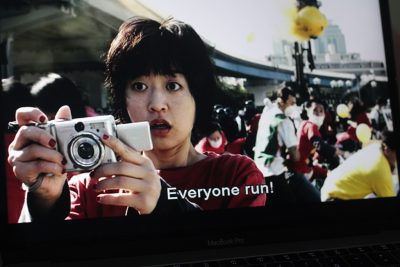Bong Joon-ho’s massively popular “Parasite” is the first foreign film to win Best Picture at the Academy Awards — a milestone in cinema history. But an underrated effect of the success of “Parasite” was that it also opened the door for a much larger audience to become familiar with Bong’s previous masterworks. The auteur had been a part of numerous films before the Oscar-winner — all of them being perfect examples of how to fuse social commentary with exciting visual storytelling. His 2006 film — “The Host” — is a standout in this regard.
In Post-Korean War South Korea, the United States’s influence cannot be understated. After the destruction of South Korea during the ’50s and ’60s, they relied on the United States’s continuous support in rebuilding not only through physical construction and monetary loans but in cultural recultivation. This led to the rapid U.S. modernization of South Korea.
The modernization seeped into cinema in South Korea. This was especially apparent through the 2000s — South Korean residents were consuming more U.S. films than South Korean ones. And the movies that were popular in South Korea routinely used the U.S. model of high-budget “hero versus villain” blockbusters.
“The Host” (2006) didn’t shy away from the CGI and action thriller genre that was popular at the time. Instead, Bong leaned into the genre’s popularity as a vehicle to express his feelings on the Americanization of his country.
The movie opens with a reenactment of a true event from 2000 when a U.S. scientist demanded his Korean assistant pour extremely toxic formaldehyde down a drain that leads into the Han River.
A few scenes later, the nonfiction threat ends, and we realize that this creates a sea monster that comes to terrorize our protagonists for the entirety of the film. Immediately, Bong is forcing the viewer to make the connection that this murderous creature is a direct result of United States order and South Korean compliance, and the victims are innocent South Korean citizens.

We are then introduced to our protagonists. The film stars Kang-ho Song — who will be very familiar to those who have watched “Parasite” or “Snowpiercer” — as Park Gang-du, the father of Hyun-seo, Nam-joo and Nam-il. They all live with Park Gang-du’s dad, Hee-bong, at a snack stand right off the Han River. The monster emerges from the water and attacks civilians, snatching the young Hyun-seo with its tail and submerging her into the river before swimming off.
The rest of the film’s main storyline deals with the family’s attempts at finding Hyun-seo and the many obstacles that stand in front of them. But unlike the traditional hero versus monster movies, the main obstacle is simply the complete incompetence of the Korean military and the U.S. and South Korean governments. I found myself asking this question so many times: where were the Korean governmental forces to help stop this beast and find the captured people?
To answer this question, Bong includes snippets of what South Korean news channels thought would be important to report on. After people are told to get onto busses away from the area and the surviving family members cry in mourning of the loss of Hyun-seo, the news reports on an U.S. sergeant who lost an arm while fighting the creature and fake virus claims, not on the deaths of South Koreans and the countless people displaced and in panic. Both the sergeant and Gang-du fought the monster. But while the former is lauded for heroism, the latter is taken away and separated from his family.
Including any more instances of how Bong depicts South Korean obedience to the United States in the film would be spoilers, as he so directly forces the viewer to make these connections. The eerily accurate portrayal of the negative U.S. influence from the very first scene to the very last makes it so that midway through the movie, the real villain no longer feels like the monster. The battle scenes with the creature take up such a brief portion of the film when compared to the family’s never-ending struggle against incompetent lying governments.
At times, “The Host” seems like a parody of CGI action Hollywood movies, and I think in many ways it is exactly that. Bong attacks South Korea’s acceptance of decades-long U.S. interventionism through the very art form that it is accepting. This makes for an untraditional action monster movie, where the subtext around the monster is far more frightening than the creature itself.
The film is available to stream for free on a multitude of platforms such as YouTube and Crackle, and is included with an Amazon Prime Video subscription.
This is an account occasionally used by the Daily Free Press editors for posts with multiple authors or otherwise for special circumstance publications. See authorship info on the byline at the top of the page.




